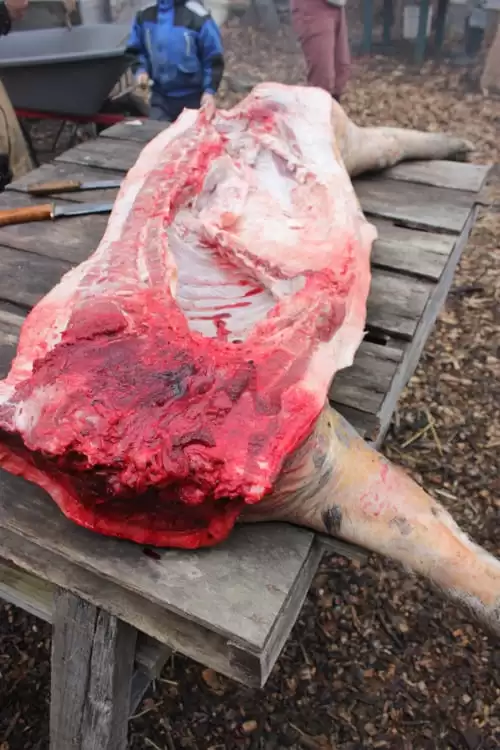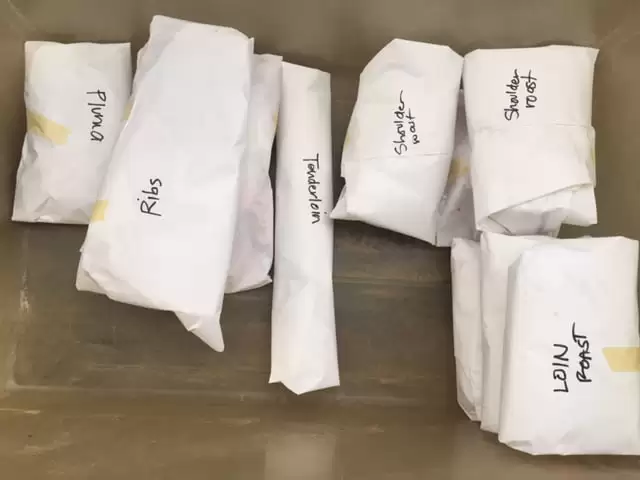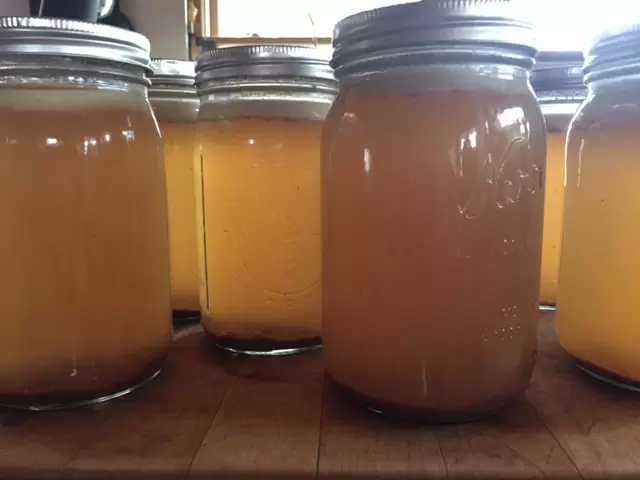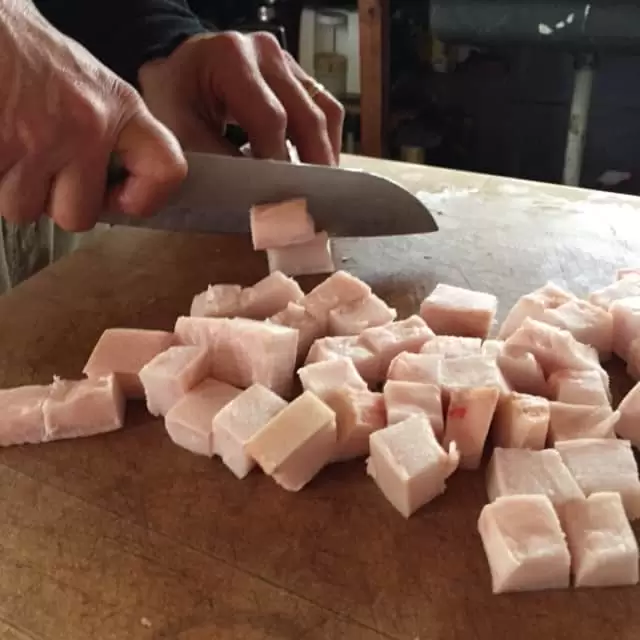{Please note: There are some graphic images in this post.}
This week we butchered these two pigs for meat.
This is our fourth time raising or co-raising pigs for meat. The first time was back in Oregon, in 2009, when we started with two organic Tamworth weaner pigs, raised them on a diet of whey, food scraps, and pig feed, called in a mobile processor to do the killing and initial processing, and then sent the meat to a butchering shop to be cut and packaged. The next year we did much the same, only increasing our numbers and raising three pigs for friends.
Upon moving to Missouri, we had the opportunity to help our friend John (of Roam Sticks fame) butcher pigs, giving us the confidence and skills to begin butchering our own hogs on the homestead. Last summer we co-raised two pigs with our neighbors, and enjoyed delicious home-grown pork chops, sausage, and some cured meats all year long.
Raising animals for meat can be an emotional process. I mean, look at the pigs above. They are adorable. We create connections with the animals we raise, greeting them each day with food and water, housing them, caring for their needs, until one day we arrive with a gun and take their lives. We have to wade through this uncomfortable space – the space between animal as warm, alive, perhaps even cute and fuzzy friend, and the delicious meat on our table. And yet, as a family of meat eaters, moving through this space gives an appreciation and connection to our food that just isn’t as present when we purchase meat from a grocery store freezer.
This post is not intended as a how-to. There are plenty of amazing videos and how-to’s available online and on YouTube (check out Farmstead Meatsmith for butchering basics, and for a primer on how to raise pigs, this post), and because Brian was engaged in the hands-on, and I was only able to be present for half the day, there are too many gaps in the process. But I hope seeing the photos will help you understand what happens in a day of butchering pigs on the homestead. It’s a LONG day(s) of work, but so worth it.
Butchering Pigs on the Homestead
After the pigs were killed (first a gun shot, then cutting the neck artery to bleed out), they were brought to the table to scald and scrape, removing all traces of hair from the body. Scalding usually involves dipping the entire body in hot water to loosen the hair, but since we didn’t have a large enough scalding trough, we continually ladled hot water (mixed with some wood ash to raise the pH) over the pig while scraping the hair off. It worked really well.
Next, we hung the carcasses and removed the innards, then sawed them in half, allowing them to cool for a few hours prior to breaking down into cuts and packaging.
This year, we decided that our favorite ways to enjoy pork are: Roasts, bacon, salami, and tenderloin chops. So, we cut a few large roasts out of the shoulder and leg, saved some nice meaty ribs, reserved the belly for bacon, and will grind much of the leg meat for sausage and salami. At some point, we’d love to hire a real butcher to come work with us, as it’s hard to discern exactly where to cut (books help, but hands-on instruction would be so much better!).
After hours and hours of work, we ended up with piles of neatly wrapped meat, bags of fat to be rendered, a cooler full of belly that will become bacon, a stock pot full of bones for broth, cheek meat to be cured, and bags of random bits of meat for sausage.
Over the next few days, we made stock …
Cut up the back fat to render into lard …
And sampled some pork (it was delicious!).
The work of butchering pigs on the homestead happens over days and weeks (for instance, today we’ll grind meat for salami), and the enjoyment of the fresh pork and cured meats lasts for months. It’s one of the most satisfying experiences we have as homesteaders, nourishing our bodies with meat that we have raised, killed, and prepared ourselves.
Read more about:
Pin it for Later:






















Why do you scald and remove hair? Just curious… We skin out everything!
Hi Kay,
We have also removed the skin, but we found that the scalding and hair removal method is not only much easier, but also keeps more of the fat intact on the pig, so you can render it. If you are doing some forms of meat curing, you also need the skin intact.
Hello Teri and Family,
Thank you for sharing this story, butchering is really a tough job, I buy half a pig and it takes me hours even without burning off the hairs etc, but the resulting cuts and lard are great food for the family. I am including a butcher chapter iin my upcoming book on French ancestral cooking coming out end of this year, The Bordeaux Kitchen. Thank you for sharing your work and homestead! Tania
Yes, there really is nothing like lard! Congratulations on your upcoming book! Teri
It is sad to lose a fellow God’s creature – but, it is satisfying to know that creature was well cared for and loved. That care and love will then sustain your family’s body for months to come. God Bless you for sharing!
Yes, I agree. We always try to raise animals with the utmost love and respect.
I remember watching my Grandpa do this every fall when I was a little girl. We grandchildren will fight for the pig tail. Why? I can’t remember. Tender hearted I always felt sorry for the pig but I understood it was a part of farm life.
That’s a story out of the book Little House in the Big Woods that I’ve always loved – mary and laura fighting over the pig tail!! We didn’t have such a fight here, but I’m sure it’s tasty!
One year when I was in Junior High School, I gave the pig tail to my science teacher Ms. Allison as a Christmas present . She was such a good sport and it may have been the most unusual gift she ever received ! LOL
That’s hilarious! What a memory!
That,s a lot of work,love pork chops had,for supper,but from the store,save pork for your,Deer Ham Burgers,s fall bow hunt,eat good.Jeff